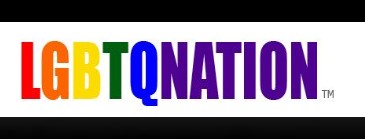Missouri
SAINT LOUIS, MO -- Researchers at the Washington University School of Medicine in St. Louis have discovered that Nanoparticles carrying a toxin found in bee venom can destroy human immunodeficiency virus (HIV) while leaving surrounding cells unharmed.
Dr. Joshua L. Hood, (MD, PhD) a research instructor in medicine who led the team said the finding is an important step toward developing a vaginal gel that may prevent the spread of HIV, the virus that causes AIDS.
“Our hope is that in places where HIV is running rampant, people could use this gel as a preventive measure to stop the initial infection,” Hood said.
Bee venom contains a potent toxin called melittin that can poke holes in the protective envelope that surrounds HIV, and other viruses. The new study shows that melittin loaded onto these nanoparticles does not harm normal cells. That’s because Hood said he added protective bumpers to the nanoparticle surface. When the nanoparticles come into contact with normal cells, which are much larger in size, the particles simply bounce off. HIV, on the other hand, is even smaller than the nanoparticle, so HIV fits between the bumpers and makes contact with the surface of the nanoparticle, where the bee toxin awaits.
“Melittin on the nanoparticles fuses with the viral envelope,” Hood says. “The melittin forms little pore-like attack complexes and ruptures the envelope, stripping it off the virus.
We are attacking an inherent physical property of HIV,” Hood says. “Theoretically, there isn’t any way for the virus to adapt to that. The virus has to have a protective coat, a double-layered membrane that covers the virus.”
While this work was done in cells in a laboratory environment, Hood and his colleagues say the nanoparticles are easy to manufacture in large enough quantities to supply them for future clinical trials.
The study appears in the current issue of Antiviral Therapy.
Illinois
Chicago Area Clergy Say They’ll Ban Lawmakers Who Support Same-sex Marriage
CHICAGO, IL -- Chicago Public Radio WBEZ reported that some African-American clergy and conservative Catholics say they’ll ban Illinois lawmakers who vote for same-sex marriage from their churches.
About two dozen priests and pastors joined the Catholic Conference of Illinois to form a new religious coalition yesterday.
“We want to make sure that we a send a message to our elected officials that as a collective community and a collaborative, we will not allow you to speak in our churches, you will not be invited to our church when you’re running for office because we as a community are incensed," said Bishop Lance Davis, senior pastor at a church in Dolton, who's part of the group.
The measure is a part of a media campaign the coalition is planning to launch Friday. They’re going to 75 churches this weekend to ask people to contact lawmakers and urge them to vote against gay marriage. They also plan billboards, TV and radio ads.
A bill that would legalize same-sex marriage is pending in the Illinois House.
A different group of clergy has called gay marriage "morally just."
California
New UCLA-Williams Institute Study: Approximately 900,000 Immigrants Identify as LGBT
LOS ANGELES—A new study released Friday estimates that there are approximately 267,000 LGBT-identified individuals among the adult undocumented immigrant population and an estimated 637,000 LGBT-identified individuals among the adult documented immigrant population. The study, led by Dr. Gary J. Gates, Williams Distinguished Scholar and an expert in the demographic, geographic, and economic characteristics of the LGBT population, estimates the number of LGBT-identified adult (age 18+) undocumented and documented immigrants and describes some of their characteristics. The report finds that approximately 71 percent of undocumented LGBT adults are Hispanic and 15 percent of undocumented LGBT adults are Asian or Pacific Islander.
Gates said of the study, “An estimated 900,000 adults in this country are LGBT immigrants, among whom more than 48,000 are in a same-sex couple in which one or both spouses or partners are not US citizens.
Under current immigration policies, many of these couples, along with the 24,000 children they are raising, may face separation if same-sex spouses or partners are not able to sponsor each other for a work visa.”
“LGBT Adult Immigrants in the United States” suggests that 3.1 percent of undocumented immigrant men identify as LGBT compared to 2 percent of comparable women. LGBT undocumented immigrants are younger than the broader undocumented population. Nearly half (49 percent) of LGBT undocumented immigrants are estimated to be under age 30 compared to 30 percent of all undocumented immigrants.
Key findings regarding adult undocumented immigrants include:
● There are an estimated 267,000 LGBT-identified individuals among the adult undocumented immigrant population, approximately 2.7 percent.● Relative to all undocumented immigrants, LGBT undocumented immigrants are more likely to be male and are younger.● 71 percent of undocumented LGBT adults are Hispanic.● 15 percent of undocumented LGBT adults are Asian or Pacific Islander.Key findings regarding adult documented immigrants include:● There are an estimated 637,000 LGBT-identified individuals among the adult documented immigrant population, approximately 2.4 percent.● Like their undocumented counterparts, LGBT documented immigrants are more likely to be male and are younger.● 30 percent of documented LGBT adults are Hispanic.● 35 percent of documented LGBT adults are Asian or Pacific Islander.Key findings regarding same-sex couples that include a foreign born spouse or partner:● There are an estimated 113,300 foreign born individuals (naturalized citizens and non-citizens) who are part of a same-sex couple. An estimated 54,600 of these individuals are not US citizens.● An estimated 32,300 same-sex couples are binational (one US citizen and one non-citizen) along with 11,700 same-sex couples comprised of two non-citizens.● Nearly 7,000 same-sex couples that include two non-citizens (58 percent) are raising an estimated 12,400 children under age 18.
The Pew Research Hispanic Center estimates that there are 36.4 million foreign born adult (age 18 and older) immigrants living in the United States. Of that group, an estimated 10.1 million are undocumented and 26.3 million are documented. The analyses derive estimates using three data sources: Pew Hispanic Research Center data on foreign born adults in the US, Gallup Daily Tracking Survey, and the Census Bureau’s American Community Survey.
























1 comments:
This is interesting work. I'm amused that the first application is for a vaginal gel after all the publicity that HIV has received as a 'Gay Plague'. I like irony.
Post a Comment